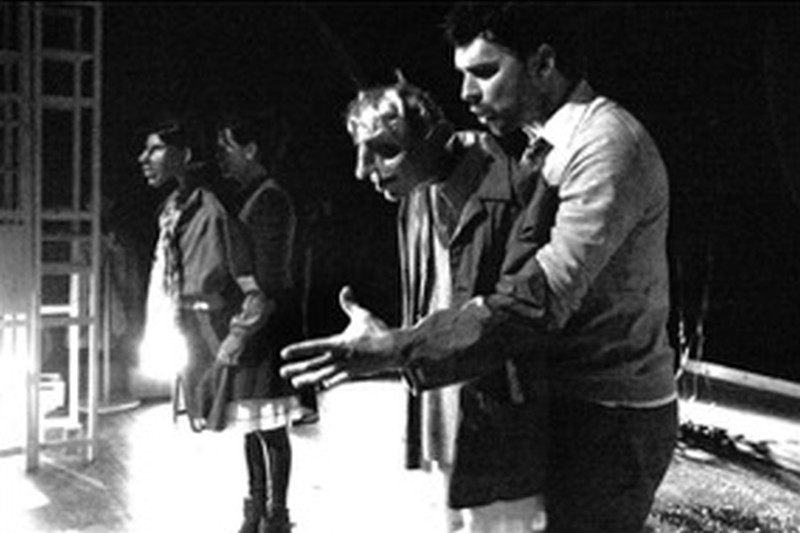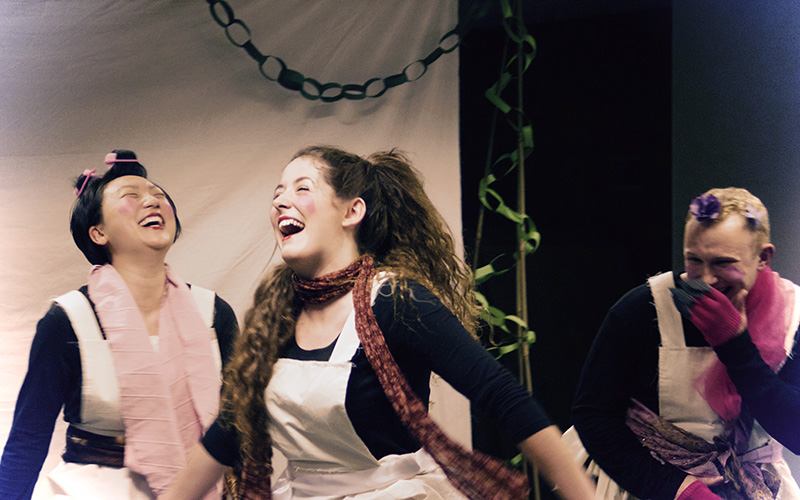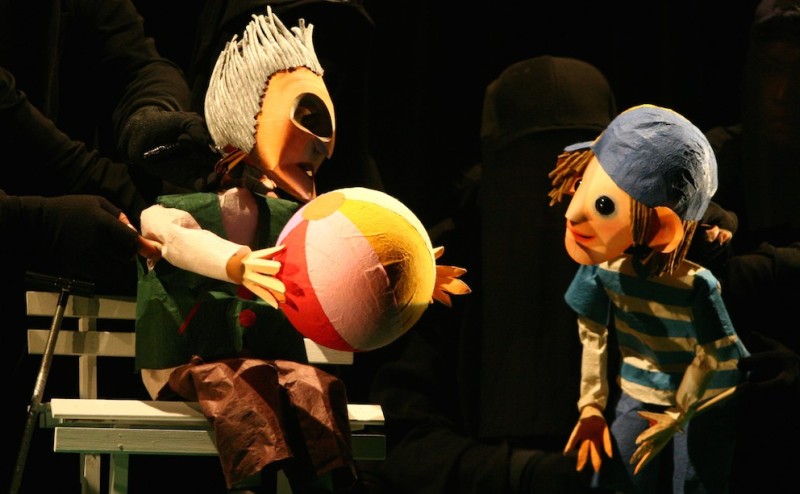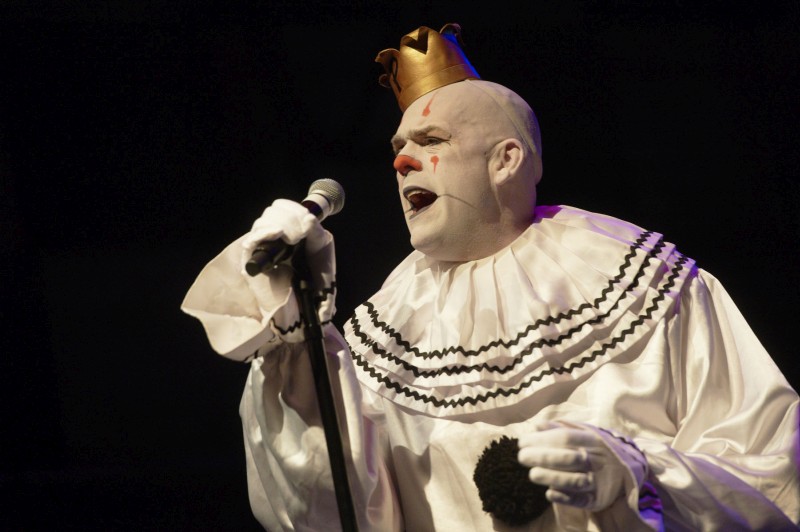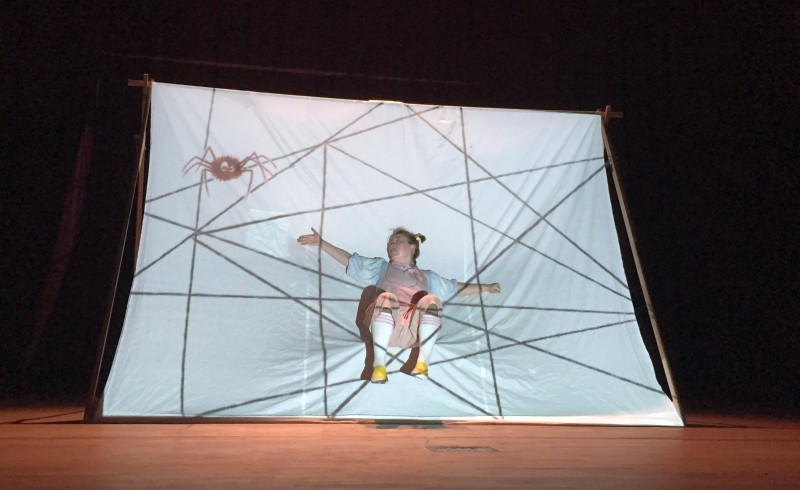 The gentle strains of light piano music welcome the audience into the space, after a formal welcome from our hosts. As we settle we notice the musician – an elderly man in a flat cap who is singing wordlessly along to the music he is playing on the keyboard. Our hosts encourage us to sit on the writing desk parts of the lecture theatre in order to see better. When the two performers arrive they begin by tying friendship bands onto the wrists of the audience before assembling a handmade projection screen from wood and fabric. One of them is dressed childishly and she has brightly painted cheeks, the other is more sensibly dressed in a kind of workman’s light jacket.
The gentle strains of light piano music welcome the audience into the space, after a formal welcome from our hosts. As we settle we notice the musician – an elderly man in a flat cap who is singing wordlessly along to the music he is playing on the keyboard. Our hosts encourage us to sit on the writing desk parts of the lecture theatre in order to see better. When the two performers arrive they begin by tying friendship bands onto the wrists of the audience before assembling a handmade projection screen from wood and fabric. One of them is dressed childishly and she has brightly painted cheeks, the other is more sensibly dressed in a kind of workman’s light jacket.
Then a short scene is played out of a father who has to go to work and a small daughter who doesn’t want him to go. Using very few words, enacted mainly in physical theatre, the daughter tries various tactics to persuade him to stay. The old musician never stops providing music and sound effects to accompany the action. He blows on a horn to create the sound of a vintage taxi waiting outside. They play a game with string, and the girl pulls on a thread of the jacket to try and keep her father home. He leaves and the thread remains.
What follows is mainly projection from a digital projector and interaction between the performer, the projected line of thread and various props that appear and disappear, sometimes transforming back and forth between real and projected. It’s playfully creative but it feels like the result of some research and development. The digital projection is a bit clunky and the animation is primitive.
The musician is brilliant and his expert playing and accompanying does its best to give the onstage activity a boost. The technically demanding interaction between performer and digital operator is skilled and a joke ending wraps the show up nicely.

